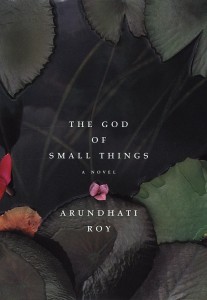Sophie Mol
 Character: Sophie Mol
Character: Sophie Mol
Source Text: Roy, Arundhati. The God of Small Things. New York: Random House Trade Paperbacks,2008. Print.Entry Author: Apollonia Roman
Sophie has been raised in England away from her biological Indian father, Chacko. Chacko uses his education at Oxford University in England to elevate himself in his Indian family, with whom he currently lives. He previously married Sophie’s mother, Margaret Kochamma, to combine his most proud accomplishments: receiving an education and obtaining a white wife (Roy 114). Sophie and Margaret have come to visit Sophie’s Indian relatives in Ayemenem after the death of Sophie’s step-father, Joe, who she “loves most in d’world” (Roy 72). Joe is everything Chacko is not; he is “steady, solvent, thin…a wedge of light” and presumably white (Roy 118). Sophie idolizes him and regards him as her true father, while Chacko is just her less important “realdad” (Roy 72). This gravitation towards a man so different in personality and race both elevates and distances Sophie from her Indian family and father.
Sophie’s only physical likeness to her “realdad” is a similar nose, “she had [her grandfather’s] nose waiting inside of hers” (Roy 68). This nose is sign of intelligence, “a moth-loving nose,” an “entomologist’s nose,” because it is something that gives educated Chacko pride (Roy 68). In contrast, Sophie’s white skin is described as much as her nose. This attribute is what differentiates her most from Chacko and his side of the family, binds her intimately with the white Margaret and biologically unrelated Joe. Her seven year old cousin Rahel describes her skin as precious, “she’s very delicate, if she gets dirty she’ll die” (Roy 100). After this statement, Rahel goes on to list Sophie’s other beautiful attributes: her hair, teeth, and legs. Yet, Sophie’s skin color takes precedence as her most impressive feature.
Every event in the novel, past, present, and future, refer, revolve, and lead up to the death of Sophie Mol. This is likely important because her “whiteness” makes her more valuable to her Indian family. “White” is mentioned nearly one hundred times throughout the novel, including references to white saris, lilies, insects, clouds, hair, etc. This imagery consistently reminds the reader that “white” is beautiful, fragile, and something to be treasured. Sophie Mol is treated as if she is such, even though she is obstinate, often speaking without reservations to her cousins. On page 73 Sophie declares that she doesn’t love her Indian family because she doesn’t know them. She is able to escape chastisement for infractions her cousins are not, such as being rude at the dinner table (Roy 153). The importance of Sophie’s fair skin eclipses her actions to her Indian family; she becomes more precious for her symbolically Western features makes her the crux of Roy’s critique on the problematic perception and reactions to class differences and reactions in the novel.
